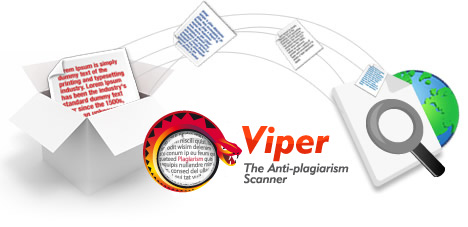MORTALITAS LARVA HAMA KUPU KUNING (Eurema sp.) AKIBAT PEMBERIAN EKSTRAK BIJI NONA SEBRANG (Annona glabra L.)
Sari
ABSTRACT
Family Annonaceae known by its potential as source of botanical insectiside. Annona glabra L. (Annonaceae) has not been widely studied. This research aimed to find out the effectiveness of A. glabra seed extract against yellow butterfly (Eurema sp. larvae. The experiment was conducted at laboratory level. Seed extract was given by oral (feeding) and direct contact (spraying). GCMS analysis showed that the main active compounds of A. glabra seed extract were 9-octadecenoic acid (oleic acid) and 13-docosenoic acid or erucic acid. It exposed effective leading mortality against Eurema sp. larvae. Lethal concentration LC value of oral and spraying treatments were 8.37 50 mg/ml and 3.92 mg/ml respectively.
Keywords: Annona glabra, botanical insecticide, Eurema sp. and mortality
ABSTRAK
Family Annonaceae sudah diketahui memiliki potensi sebagai pestisida nabati. Nona sebrang (Annona glabra L.) adalah salah satu jenis dari famili Annonaceae yang belum banyak dipelajari. Penelitian ini bertujuan untuk menguji efektivitas ekstrak biji nona sebrang terhadap mortalitas larva kupu-kupu kuning (Eurema sp.). Penelitian dilakukan pada tingkat laboratorium. Ekstrak biji nona sebrang diberikan dengan cara oral (pemberian pakan) dan kontak langsung (penyemprotan) ke serangga uji. Hasil analisis GCMS menunjukkan bahwa senyawa aktif utama penyusun ekstrak biji nona sebrang adalah 9-octadecenoic acid (asam oleat) dan 13-docosenoic acid atau erucic acid. Senyawa tersebut terbukti efektif mematikan ulat larva Eurema sp. Nilai konsentrasi lethal (LC ) untuk 50 perlakuan penyemprotan pakan dan penyemprotan langsung ke larva masing-masing adalah 8,37 mg/ml dan 3,92 mg/ml.
Kata kunci: Annona glabra; Eurema sp; insektisida nabati dan mortalitas
Kata Kunci
Teks Lengkap:
PDFReferensi
BPS [Badan Pusat Statistik]. (2013). Sensus Pertanian, Subsektor Kehutanan. http://st2013.bps.go.id/dev2/index.php/site/tabel?tid=65&wid=0. Diakses 23 April 2015.
Chaubey, M.K. (2012). Acute, lethal and synergistic effects of some terpenes against Tribolium castaneum Herbst (Coleoptera: Tenebrionidae). Ecologia Balkanica, 4(1), 53-62.
Costa, M.S., Cossolin, J.F.S., Pereira, M.J. B., Sant’Ana, A.E. G., Lima, M.D., Zanuncio, J.C., & Serrão, J.E. (2014). Larvicidal and cytotoxic potential of squamocin on the midgut of Aedes aegypti (Diptera: Culicidae). Toxins, 6,1169-1176.
El-Wakeil, N.E. (2013). Botanical pesticides and their mode of action. Gesunde Pflanzen, 65, 125-149.
Huang, F., Qureshi, J.A., Meagher Jr, R.L., Reisig, D.D., Head, G.P., Andow, D.A., Ni, X., Kerns, D., Buntin, G.D., Niu,Y., Yang, F., & Dangal, V. (2014). Cry1F resistance in fall armyworm Spodoptera frugiperda: single gene versus pyramided bt maize. PLoS ONE, 9(11), e112958 doi:10.1371/journal.pone.0112958.
Imaniar, R., Latifah, & Sugiyo, W. (2013). Ekstraksi dan karakterisasi senyawa bioaktif dalam daun kenikir (Cosmos sulphureus) sebagai bahan bioinsektisida alami. Indonesian Journal of Chemical Science, 2(1), 51-55. http://journal.unnes.ac.id/sju/index.php/ijcs
Krinski, D., Massaroli, A., & Machado, M. (2014). Insecticidal potential of the annonaceae family plants. Revista Brasileira De Fruticultura, 36(1), 225-242.
Meenakshi, V.K., Gomathy, S., Senthamarai, S. Paripooranaselvi, M., & Chamundeswari, K.P. (2012). GC-MS determination of the bioactive components of Microcosmus exasperatus Heller, 1878. Journal of Current Chemical Pharmaceutical Sciences, 2(4), 271-276.
Ogah, E.O., & Ogbodo, E.N. (2012). Comparative efficacy of neem seed extract with carbofuran in the management of african rice gall midge, Orseolia oryzivora Harris and Gagne (Diptera: Cecidomyppdae). Journal of Biology, Agriculture and Healthcare, 2(5), 147-153.
Pavela, R., & Govindarajan, M. (2016). The essential oil from Zanthoxylum monophyllum a potential mosquito larvicide with low toxicity to the non-target fish Gambusia affinis. Journal of Pest Sciences, 1-10. doi:10.1007/s10340-016-0763-6
Pérez-Gutiérrez, S., Zavala-Sánchez, M.A., González-Chávez, M.M., Cárdenas-Ortega, N.C., & Ramos-López, M.A. (2011). Bioactivity of Carica papaya (Caricaceae) against Spodoptera frugiperda (Lepidoptera: Noctuidae). Molecules, 16, 7502-7509.
Perumalsamy, H., Jang, M.J., Kim, J.R., Kadarkarai, M., & Ahn, Y.J. (2015). Larvicidal activity and possible mode of action of four flavonoids and two fatty acids identified in Millettia pinnata seed toward three mosquito species. Parasites & Vectors, 8(237), 1-14.
Rani, U.P. (2014). Kairomones for Increasing the Biological Control Efficiency of Insect Natural Enemies dalam Sahayaraj, K. (Ed.). (2014). Basic and Applied Aspects of Biopesticides. Springer, New Delhi, http://www.springer.com/us/book/9788132218760
Reifenrath, W. (2014). US Application patent No 13/264,238.
Ribeiro, L.D.P., Santos, M.S., Gonçalves, G.L.P., & Vendramim, J.D. (2015). Toxicity of an acetogenin-based bioinsecticide against Diaphorina citri (Hemiptera: Liviidae) and its parasitoid Tamarixia radiata (Hymenoptera: Eulophidae). Florida Entomologist, 98(3), 835-842.
Sujak, & Diana, N.E. (2012). Uji efektifitas ekstrak nikotin formula 1 (pelarut ether) terhadap mortalitas Aphis gossypii (Homoptera; Aphididae). Agrovigor, 5(1), 47-51.
Thang, T.D., Dai, D.N., Hoi, T.M., & Ogunwande, I.A. (2013). Study on the volatile oil contents of Annona glabra L., Annona squamosa L., Annona muricata L. and Annona reticulata L., from Vietnam. Natural Product Research, 27(13), 1232-1236.
Tuhumury, A. (2007). Inventarisasi jenis hama pada tanaman sengon (Paraserianthes falcataria Nielson) di lokasi hutan kemasyarakatan Waesamu, Kecamatan Kairatu, Kabupaten Seram Bagian Barat. Jurnal Agroforestri, 2(1), 13-18.
Utami, S. (2010). Aktivitas insektisida Bintaro (Cerbera odollam Gaertn) terhadap hama Eurema spp. pada skala laboratorium. Jurnal Penelitian Hutan Tanaman, 7(4), 211-220.
Zhang, Q., Margaryan, A., & Schneidmiller, R.G. (2011). Methods for repelling insects using sesquiterpene hydrocarbons and their derivatives.
Paten Nomor US 8057829 B2.
Zhu, W., Schmehl, D.R., Mullin, C.A., & Frazier, J.L. (2014). Four common pesticides, their mixtures and a formulation solvent in the hive environment have high oral toxicity to honey bee larvae. PLoS ONE, 9(1), 1-11.
DOI: https://doi.org/10.20886/jpht.2016.13.2.157-164
##submission.copyrightStatement##
JURNAL PENELITIAN HUTAN TANAMAN INDEXED BY:
Copyright of Jurnal Penelitian Hutan Tanaman (JPHT)
eISSN : 2442-8930 pISSN : 1829-6327
JPHT is licensed under a Creative Commons Attribution-NonCommercial-ShareAlike 4.0 International License.

